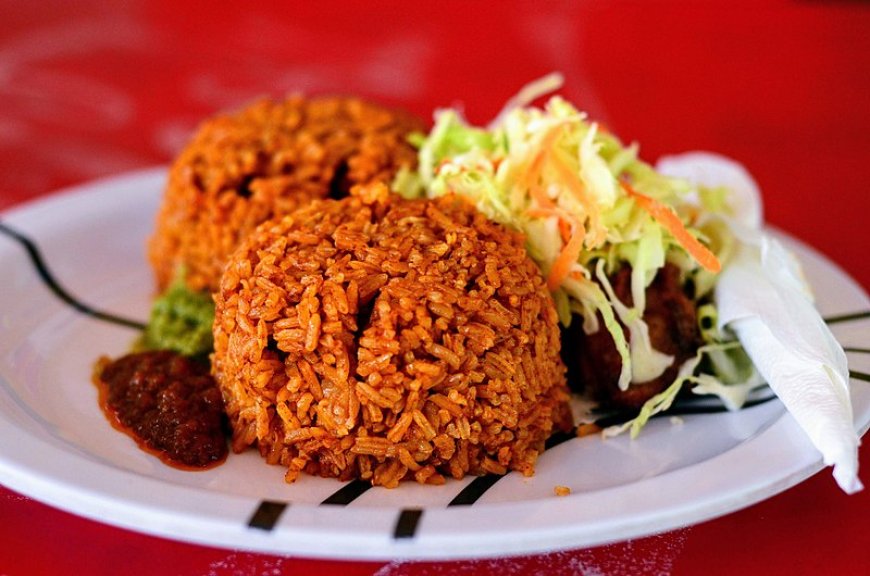From Exotic Import to Mainstay: The Rise of Rice in Ghanaian Cuisine

Picture this: you’re at a bustling street stall in Accra. The aroma of spicy stew wafts through the air, steam rises from bowls of jollof rice, and customers line up for generous portions of waakye.
Rice is everywhere—yet just a few generations ago, it was virtually unknown in Ghanaian homes. In this piece, we trace how a grain once viewed as an exotic import became the backbone of Ghana’s modern cuisine, why its prominence demands our attention, and what it means for our nation’s food security and economy.
First of all, How Rice Entered and Grew in Ghanaian Diets,Historically, rice was not a traditional staple in most Ghanaian homes. Before the colonial era, major staples included yam, cassava, plantain, and maize. Rice was introduced through trade and colonial influence, often served in mission schools and boarding institutions.With urbanization in the post-independence period, rice consumption steadily rose.
City life demanded quick, easy-to-prepare meals. Rice met this need — especially among workers and students. As street food culture blossomed, rice became even more popular, integrated into beloved dishes like waakye and jollof.
Over time, dishes like waakye (a rare traditional blend using rice and beans), jollof rice (with West African roots), and fried rice (influenced by Asian cuisine) became mainstream. While these dishes are now considered local favorites, their origins tell a story of cultural blending and adaptation.Government agricultural campaigns like Operation Feed Yourself in the 1970s and Planting for Food and Jobs in recent years aimed to boost local production.
However, demand has consistently outpaced supply, leading to an ongoing reliance on imports.
In Ghana’s traditional kitchens, maize has long been king. Foods like banku, kenkey, tuo zaafi, and akple all trace their roots to maize, supported by staples like cassava, yam, and plantain. In fact, there is hardly any indigenous Ghanaian dish that was originally made with rice.
Yet, today, rice has risen to dominate meals across the country — from home-cooked dinners to street food and ceremonial occasions.This transformation is more than just a change in taste — it reflects deep shifts in Ghana’s history, economy, and lifestyle. Also, there are some reasons I think the shift to rice should be discussed,Ghana’s growing dependence on rice is not just a cultural issue — it’s also economic and strategic.
While maize and other local staples can be grown in abundance, rice production faces challenges such as limited irrigation, poor post-harvest systems, and droughts. As a result, Ghana imports more rice than it grows.
This dependence comes with high costs: pressure on foreign exchange, vulnerability to global
price shocks, and missed opportunities for rural job creation. Also, Between 2023 and 2025, rice imports in Ghana have seen a steady rise. In 2023, the country imported about 516,104 metric tons of rice, worth around $286 million, mainly from Vietnam, China, Thailand, India, and Pakistan (World Bank WITS). In 2024, imports increased to 950,000 metric tons because droughts in eight regions caused a 21% drop in local
rice production (USDA FAS Report GH2024-0015).
For 2025, it is projected that Ghana will import 1 million metric tons of rice, as demand continues to grow and dry weather is expected to affect local production again (USDA FAS Report GH2025-0012).
In conclusion ,Rice has now earned its place on the Ghanaian plate, but we must reflect on what that means. This wasn’t always our food. Our traditional diet was built on maize, yam, and plantain — crops we grow abundantly.
To protect Ghana’s food future, we need to ask: Are we supporting our local farmers enough? Are we ready to produce the rice we consume? And should we return to our traditional crops for sustainability?
In answering these questions, we can begin to shape a food system that feeds both our bellies
and our economy.
Source: Beatrice Korkor Adjenyo /Lead News Online

























































